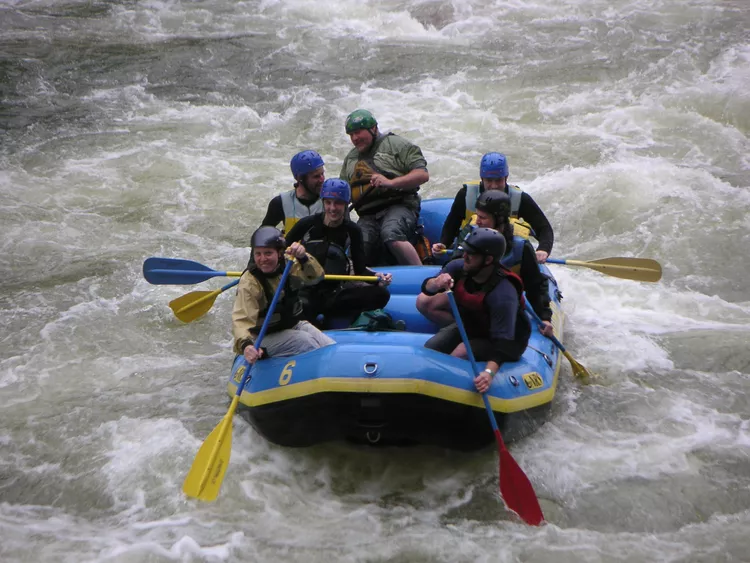Summary
Whitewater rafting is one of the most exhilarating experiences in life; however, it also comes with inherent dangers. As with skiing, zip lining, sky diving, and rock climbing, the decision to embark on a whitewater rafting adventure is about calculated risk. Therefore, understanding the potential risks involved is crucial for safety. This article highlights the top five dangers to watch out for when whitewater rafting.
Drowning is the #1 Danger of Whitewater Rafting
Drowning is a significant risk whenever water is involved. It can occur as a result of other risks, and it’s essential to recognize its reality. Rafts can flip, causing individuals to fall out. Although you will be wearing a personal flotation device (PFD) for buoyancy, the force of moving water can often exceed the life jacket’s effectiveness, leading to dangerous situations. It’s critical to acknowledge your swimming abilities, as failing to do so could increase the risk of drowning, especially for those who are not confident swimmers.
Hypothermia is a Real Danger When Whitewater Rafting
Whitewater rivers typically come from snowmelt or reservoirs, making the water inherently cold. The best time for whitewater rafting is often in the spring when air temperatures are also low. While wearing a wetsuit or drysuit will provide some protection against the cold, immersion in icy water can still lead to hypothermia. If cold temperatures are a concern for you, it might be wise to seek out opportunities for summer whitewater rafting experiences.
Overexertion is Often the Cause of Death in Rafting
Surprisingly, many people do not consider overexertion to be a primary danger in whitewater rafting. However, most rafting-related fatalities result from heart attacks among individuals who are not in optimal physical condition. During rescues, people may exert themselves excessively while swimming against strong currents, leading to heart-related incidents. Consequently, it’s crucial for participants to be aware of their physical fitness levels before undertaking challenging whitewater experiences.
Smashing into Rocks
While fatalities are a serious concern in whitewater rafting, injuries from colliding with rocks are far more common. Such injuries can occur even while remaining in the raft, as participants can be thrown against boulders or hit by swinging paddles. Therefore, maintaining awareness of your surrounding environment is key to avoiding painful accidents.
Getting Stuck In River Features
Another significant risk associated with whitewater rafting is the potential to become trapped in river features. Swimmers can find themselves stuck in holes, pinned against rocks, or entangled in downed trees, known as strainers. This particular danger can be terrifying, as individuals have limited time to surface for air if caught in such situations. Nevertheless, understanding the environment can help mitigate this risk.
It’s important to note that the intention of this article is not to deter you from experiencing the thrill of rafting. Millions of people successfully navigate whitewater each year without incident. However, being informed of the possible risks can enhance your overall rafting experience.





